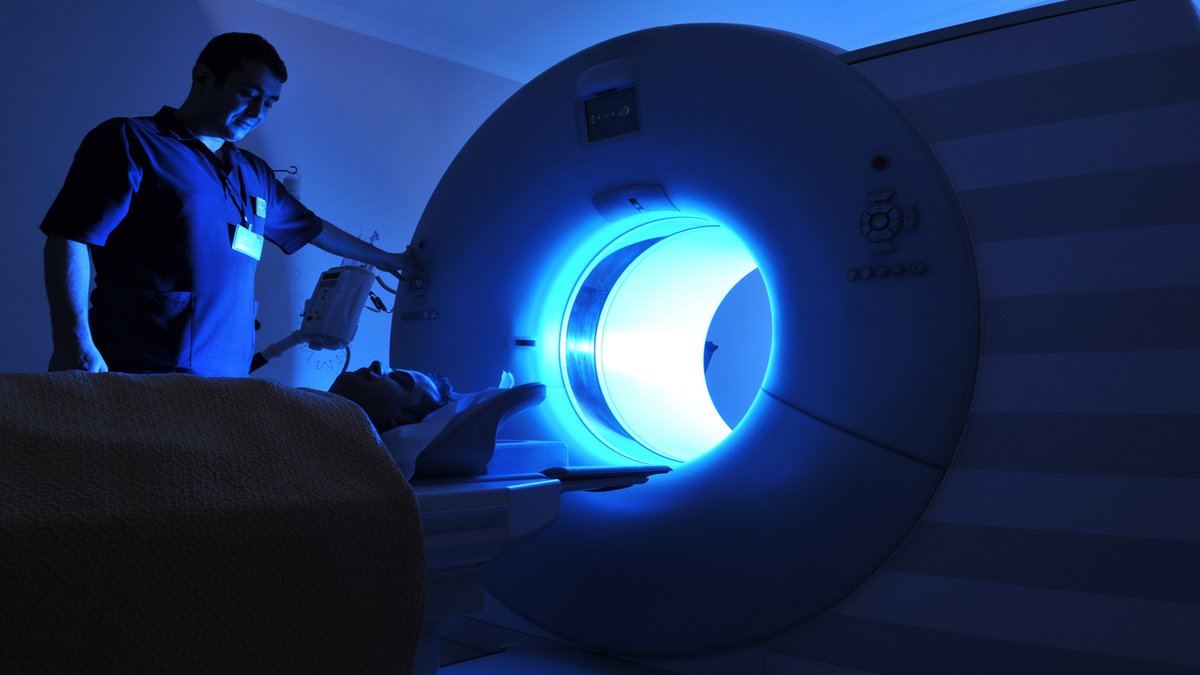
Learn about the diagnostic tests that doctors employ during an assessment for Alzheimer’s disease.
With the adoption of the Diagnostic and Statistical Manual of Mental Disorders 5 (DSM 5), the definition of dementia has been significantly transformed and updated. That makes this an excellent time to review the approach to diagnostic assessment of dementia and identification of Alzheimer’s disease. Previously, a diagnosis of probable Alzheimer’s required the presence of a decline in memory and at least one of several other cognitive domains, not attributable to another medical or psychiatric disorder, resulting in an impairment of social and/or occupational functioning.
DSM 5 updates this approach in light of our greater understanding of neurocognitive disorders. Now, the presence of a decline in one or more cognitive functions warrants the diagnosis of dementia (major neurocognitive disorder) if this impairment interferes with independence and is not better explained by another medical or psychiatric disorder. Alzheimer’s is the most common form of dementia, but clinicians can use information from the history, current mental status examination, and neuropsychological or medical testing to refine the diagnosis further and specify whether Alzheimer’s or another type of dementia is suspected.
Careful assessment of a person’s history, current complaints, and mental status examination remains the cornerstone of diagnostic assessment, but clinical assessment runs a risk of missing early and subtle indicators of dementia, misclassifying Alzheimer’s as a different cognitive disorder, or mistaking another cognitive disorder for Alzheimer’s. Fortunately, a variety of additional tests are available to increase the accuracy of diagnosis, which are discussed below. Some less reliable or less widespread tests will not be covered in this discussion.
Medical History and Mental Status Examination
Clinical assessment of a patient’s history and performing a mental status examination are necessary steps in the evaluation of cognitive disorders. In identifying the presence of Alzheimer’s, the presence of a typical slow and insidious progression of symptoms is sought. Other factors capable of producing cognitive impairment are identified, including medical disorders, substances or medications that can cause cognitive impairment, or psychiatric conditions associated with cognitive changes. The characteristic clinical syndrome of Alzheimer’s includes a prominent disturbance of what is known as episodic memory (long-term memory that involves the recollection of situations, specific events, and experiences).
Memory of recent events is particularly impaired, and evidence that reminders are of limited benefit is consistent with the memory storage problem typically found in Alzheimer’s. Language and visuospatial problems may also be reported or identified. In less common variants of Alzheimer’s, the disturbance of language or visual functions may be more prominent than memory difficulties in the disease’s early stage.
Neuropsychological Screening Tests
Brief Neuropsychological Assessment Tools such as the Mini-Mental State Exam (MMSE) and the Montreal Cognitive Assessment (MoCA) are available to screen for cognitive difficulties, although large-scale routine screening of asymptomatic people is not recommended. In a busy primary care practice setting or in other appropriate contexts, these examination aids can justify further diagnostic testing in an individual who reports or shows cognitive changes. Longer and more comprehensive neuropsychological test batteries can estimate the severity of decline and characterize specific cognitive strengths and weaknesses. Administration of these test batteries requires training and certification. Evidence from neuropsychological testing, whether brief or more extensive, is interpreted in the context of a person’s overall medical and psychosocial circumstances.
Blood Tests
Recently, there has been excitement about the future availability of a blood test that can identify the presence of Alzheimer’s, but currently available blood tests are not able to do this. Blood testing, however, can be very useful in the diagnostic assessment of a person who is showing cognitive changes. They can help the physician identify other causes of cognitive impairment that can mimic Alzheimer’s clinical presentation. Infections such as HIV, metabolic disturbances such as hypothyroidism or hyponatremia (low blood sodium), autoimmune disorders such as giant cell arteritis, nutritional deficiencies such as pernicious anemia, and toxic conditions such as heavy metal poisoning are among the many conditions that can impair cognition and might be revealed by appropriately chosen blood tests. Blood tests that look for multiple Alzheimer’s disease-related proteins or evaluate the clearance of amyloid are under investigation. In 2020, evidence was published supporting a very exciting blood test that measures a species of hyperphosphorylated tau protein specific to Alzheimer’s. This test, PTau217, is capable of differentiating Alzheimer’s from several other types of dementia. When developed into a clinically available test, it could very significantly increase clinicians’ accuracy in differential diagnosis.
Cerebrospinal Fluid (CSF) Tests
A lumbar puncture is required for withdrawal of cerebrospinal fluid. When clinicians are searching for infectious causes of cognitive impairment such as herpes encephalitis, examination of cerebrospinal fluid may be necessary in order to reach a definitive diagnosis. It is possible to quantify the relationship between cerebrospinal fluid beta-amyloid and tau, proteins associated with Alzheimer’s. An abnormal result for this test, in the context of clinically measured cognitive impairment, is considered a “biomarker” associated with AD. CSF tests, however, are used infrequently in many settings due to the potential discomfort, possible complications, and limited availability of trained clinicians available to perform this procedure.
Brain Imaging
Brain imaging (neuroimaging) studies are recognized as an important component of the evaluation of any individual with a prominent change in cognitive functioning. Neuroimaging techniques fall into two major categories:
Computed Tomography and Magnetic Resonance Imaging
- Structural imaging such as Computed Tomography (CT) or Magnetic Resonance Imaging (MRI) yields a picture of the brain that allows the identification of such features as volume loss or abnormal structural features such as white matter disease, masses, or vascular abnormalities, which are considered indications of neuronal degeneration. Newer techniques, such as diffusion tensor imaging, reveal subtle structural changes that may precede more easily identifiable volume loss in the brain. Functional imaging, such as fMRI, can be used to identify abnormal patterns of brain activation or metabolic activity.
Positron Emission Tomography
- Positron Emission Tomography (PET) scanning uses radioactively labeled tracers to investigate the brain’s inner workings. Pictures of the brain distribution of radioactively labeled glucose is injected intravenously. Glucose is used for energy by the brain, and can help to identify areas of abnormal metabolic activity. Most insurances will cover the cost of using this FDG-PET to differentiate between suspected AD and frontotemporal dementias.
- A newer class of PET tracers identifies the presence of accumulated beta-amyloid or hyperphosphorylated tau protein. Amyloid PET scans indicate whether amyloid accumulation is present in a person’s brain. Abnormal results for an amyloid scan are associated with a high probability of clinical AD, but the expense of this test (which is not yet routinely covered by insurance) has impeded its widespread use. Tau PET scanning is already in use as a research tool at this time but it is not approved for use as a clinical tool.
EEG
Electroencephalography (EEG) is occasionally ordered during the course of the evaluation of an individual with new cognitive changes. EEG changes associated with a very specific cause of dementia, such as the typical pattern seen in Creutzfeldt-Jakob disease, are uncommon. EEG can identify the presence of a treatable seizure disorder or suggest the presence of a delirium that may be at least partly reversible.
Summary
In many cases, the diagnosis of AD is made with considerable accuracy on the basis of history and mental status examination. Alzheimer’s, however, is only one of many disorders capable of interfering with cognitive function. We still await the availability of a clinical test for Alzheimer’s that is very accurate, widely available, and covered by insurance, but the diagnostic tests described here are very useful for supporting a clinical diagnosis and seeking treatable alternate explanations for cognitive changes.
About BrightFocus Foundation
BrightFocus Foundation is a premier global nonprofit funder of research to defeat Alzheimer’s, macular degeneration, and glaucoma. Since its inception more than 50 years ago, BrightFocus and its flagship research programs—Alzheimer’s Disease Research, Macular Degeneration Research, and National Glaucoma Research—has awarded more than $300 million in research grants to scientists around the world, catalyzing thousands of scientific breakthroughs, life-enhancing treatments, and diagnostic tools. We also share the latest research findings, expert information, and resources to empower the millions impacted by these devastating diseases. Learn more at brightfocus.org.
Disclaimer: The information provided here is a public service of BrightFocus Foundation and is not intended to constitute medical advice. Please consult your physician for personalized medical, dietary, and/or exercise advice. Any medications or supplements should only be taken under medical supervision. BrightFocus Foundation does not endorse any medical products or therapies.
- Brain Health








